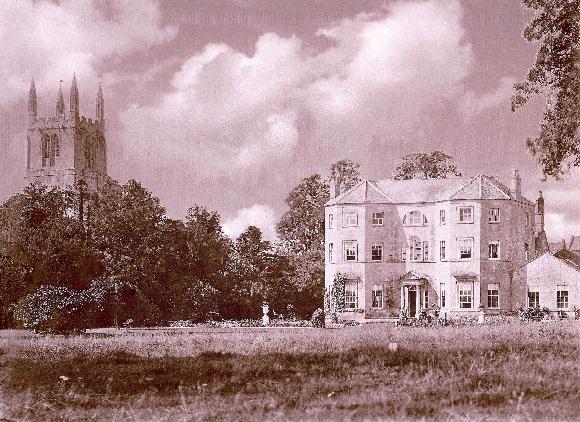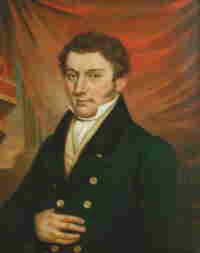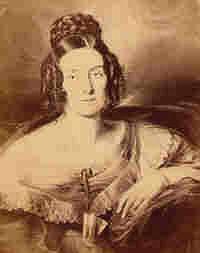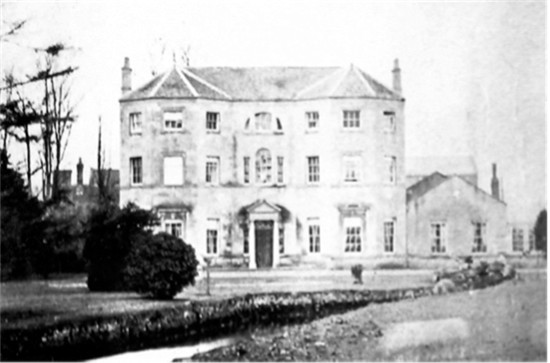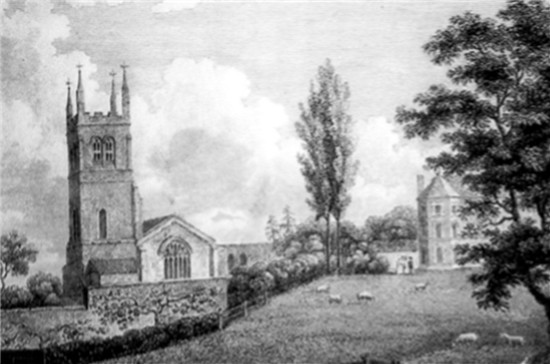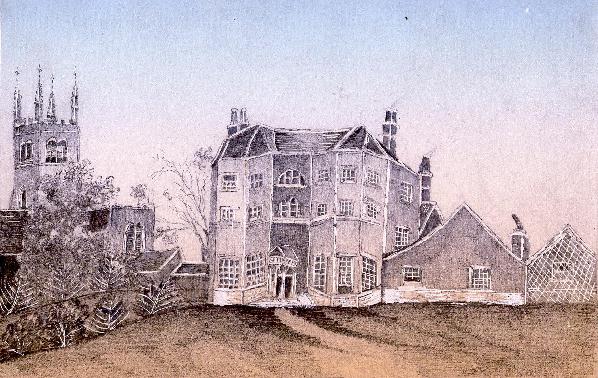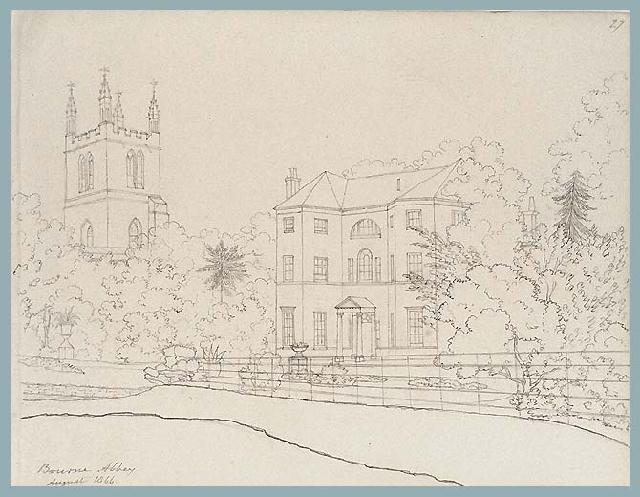|
The Abbey House
One of the grandest properties in Bourne in past times was the Abbey House, described as "a fine mansion" when it was built in the mid-18th century but its life was a comparatively short one because it was demolished in 1878 and no one appears to know the reason why. Had it become too large and unmanageable or perhaps fallen into disrepair? I have searched the archives in vain to find out why this imposing Georgian property should disappear from such a coveted location near to the church but can find no mention of it other than reports of it being dismantled. The house was built in 1764 by George Pochin, three years after he inherited the estate of his uncle, Sir Thomas Trollope, and became Lord of the Manor of Bourne Abbots. Pochin lived there for a short time but it was eventually bought by the church for use by their ministers and during this period, it was always known as Bourne Abbey, perhaps because it was built on the site of the old abbey buildings of mediaeval times. The Peterborough Advertiser, for instance, reported in 1871: "The vicarage stands on the old site of the Augustinian Abbey and it is a modern mansion, surrounded by extensive grounds." The vicarage was originally at Brook Lodge in
South Street which was used from 1776 until 1848. It was enlarged and altered in
the summer of 1842 at a cost of £450 but was still not big enough for the
purpose and as a larger property was needed, the Abbey House was deemed to be a suitable place. Pochin died in 1798 but
his sister Mary stayed on until she too died in 1804 when the property passed to
her sister-in-law, George Pochin's widow, Eleanor Frances Pochin, together with
other manorial estates in the town. She died in 1823 and the property stood
empty for a while until being leased by her trustees to various tenants and it
is this eventuality that has given us an idea of what the house was like.
There were other tenants but in 1849, the house was acquired by the church as the new vicarage for the then incumbent, the Rev Joseph Dodsworth, who had been appointed to the living in 1842, the deal being effected by trading the old vicarage and 40 acres of land in the North Field for the Abbey House, the Abbey Lawn and a small piece of land in the South Fen. The only details of this transaction to survive are included in a brief, handwritten account by Dodsworth in the back of the parish registers (Baptisms 1759-1812) where he used several blank pages to record various events during his ministry. Dodsworth remained there until his death in May 1877 after serving the parish as curate and vicar for more than half a century. Two years after his death, a new vicarage was opened in 1879 but that too became redundant when it was replaced by the present building in 1986 and is now the Cedars retirement and rest home. Demolition of the Abbey House, or Bourne Abbey, began late in 1877 and construction of the new vicarage was well advanced by the summer of the following year. The Stamford Mercury reported on Friday 23rd August 1878: "The new Abbey is nearly completed and though not so large as the old edifice, it is thought by most people to be more appropriate." The work however was not without its dangers and the newspaper reported the following week, on Friday 30th August: "A serious accident occurred on Monday in connection with the building of the new Abbey. It appears that two men named Hare and Brown were engaged taking down some scaffolding and by some means a pole slipped before they were aware of it. Hare fell to the ground, breaking an arm in two places, but it is hoped that under the skilful treatment of Dr [Frederick] Glencross, he is progressing favourably." No reason was given as to why the Abbey House was pulled down and no mention is made in subsequent newspaper reports. Its disappearance from the landscape is therefore a matter of speculation. Did Mr Dodsworth, like many of today's clergymen when faced with the prospect of living in large and draughty vicarages, eventually find the place too big to manage and too expensive to heat? This may have been the case because by then, Dodsworth was a widower, his second wife Ellen having passed away on 31st March 1876, and so he may have drawn up the plans for the new house, only to die before they came to fruition. Or perhaps his successor disliked the property. The Rev George Massey, of Uley, Dursley, Gloucestershire, having accepted the incumbency in July 1877, arrived at Bourne on Tuesday 23rd October 1877 when a special peal was rung on the church bells to welcome him but there is the possibility that his wife did not like their future home and insisted on a more suitable one for herself and the family. There is evidence from this period that clergymen's wives were a force to be reckoned with and their husband's appointment often depended on their decision. Whatever the reason, the Abbey House had disappeared by 1879 when the new vicarage opened and Mr and Mrs Massey were the first tenants. Contemporary prints show the Abbey House to be a fashionable Georgian country mansion with a pleasing aspect and situated close to the church although a watercolour sketch from 1858, describing it as "Bourne Abbey", survives and signed only by the initials "M.A.N." suggesting that by this time, the house was in an extremely dilapidated state although the vicar at that time, Joseph Dodsworth, was a sufficiently wealthy man to maintain it in a reasonable condition. But the question as to why such a substantial property should be pulled down after only 114 years persists although the answer may well lie in some dusty archive waiting to be discovered quite by chance by a future historian and only then will the mystery be explained.
REVISED MARCH 2014 See also The churchyard dispute of 1846 The vicarage The Pochin family
Go to: Main Index Villages Index
|
||||||||||||||||||
